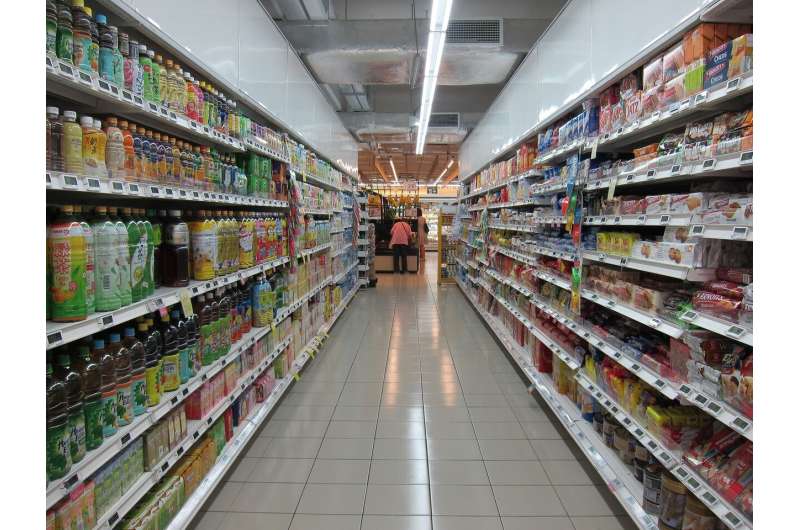Why are grocery bills so high? A new study looks at the science behind food price reporting

Rising food costs are . Nearly everyone is feeling the pinch, and it's not just an inconvenience—high food prices are a . Understanding why food prices are so high and why they are changing is critical to the well-being of our society.
Unfortunately, consensus on why food price are so high is in short supply. Explanations given in reports like and the range widely, from the war in Ukraine to supply chain issues to the carbon tax.
Each year it seems the key drivers change, and if the is any indication, consumers want better answers.
So, that shape the narratives around food prices in Canada, including twelve years of and 39 reports from . Our findings, which are peer reviewed and soon to be published in , were both insightful and concerning.
Lacking scientific rigor
Our analysis found that most claims about food prices in these reports lack scientific rigor. Nearly two-thirds of the explanations for price changes given are not backed by evidence. Arguments about the causes of food inflation are frequently incomplete, neglecting to connect the dots between cause and effect.
For instance, reports may identify the influence of unfavorable weather, climate change or changing retail demand, but fail to elaborate how these translate into actual price increases at the till.
British philosopher Stephen E. Toulmin published in 1958. In a nutshell, for a scientific argument to be complete, it needs to have three components: a claim, verifiable observations or data that provide grounds for that claim, and an explicit theory or assumption that links the data logically to the claim.
For scientific arguments to be rigorous, they should also back up the strength of their assumptions and qualify their claims by exploring reasonable counterarguments. However, most of the arguments in these reports fall short of this, failing even to provide basic evidence in support of their claims.
These reports are not scientific publications, but rather qualify as ""—information produced outside traditional academic publishing channels.
Nevertheless, they are published under the logos of academic institutions and government agencies. Given their prominence in Canadian media and policy, we believe it is important for the public to know that the arguments presented in these reports do not live up to scientific standards.
Overlooking key issues
While the reports do identify potential drivers of food prices, they have some noteworthy gaps.
While extreme weather events and climate change are sometimes offered as abstract reasons for food price increases, some major environmental issues, like and , do not appear in reports, despite a widespread understanding that they will impact food price and availability.
These reports also rarely consider the decisions that grocers and other private sector entities have on food prices. is a structural issue that deserves scrutiny.
a few years ago showed how a lack of competition enables price manipulation and hurts consumers. into the owners of Loblaws and Sobeys for alleged anti-competitive conduct.
In the United States, there is also strong evidence that the private sector has been . The U.S. Federal Trade Commission likewise recently found that to pad their profits at the public's expense.
With , it is fair to ask tough questions about how much grocers' decisions are contributing to the pain at the till.
In our analysis, only three percent of the over 200 explanations for food price changes point to grocer actions or other agency in the private sector as driving price increases. This reflects a tendency to portray food prices as erratic and overwhelmingly opaque.
Other issues—such as the across the supply chain—also go unmentioned.
A new approach is needed
Without rigorous and transparent analysis, we're left with an incomplete picture of why food is so expensive and what we can do about it.
What we need is a new approach. , but a unique one in that we rely on the private sector to provision it. We should expect a higher standard than with other consumer goods, and the private sector has arguably not earned the benefit of the doubt given their history of price fixing.
One positive step towards generating trustworthy evidence about food prices would be to incorporate transparency measures into the . This could include third-party audits, open data-sharing and a clear breakdown of what's driving price changes—from the farm to the shelf.
Peer review of research is a critical aspect of responsible science. In our paper, we highlight the process that the for federal fisheries science, as one possible model for government-based food price reports.
For something as essential as food, Canadians deserve the full story. For decades, , but at the expense of workers and the environment.
If food prices are rising because they are starting to reflect the true social and ecological costs of production, we will need to enter a broader conversation about economic and livelihood reform to ensure that everyone can afford food. But without a clear picture of the actual drivers, we lack the necessary information for developing policies that protect the rights and well-being of Canadians.
Provided by The Conversation
This article is republished from under a Creative Commons license. Read the .![]()





















